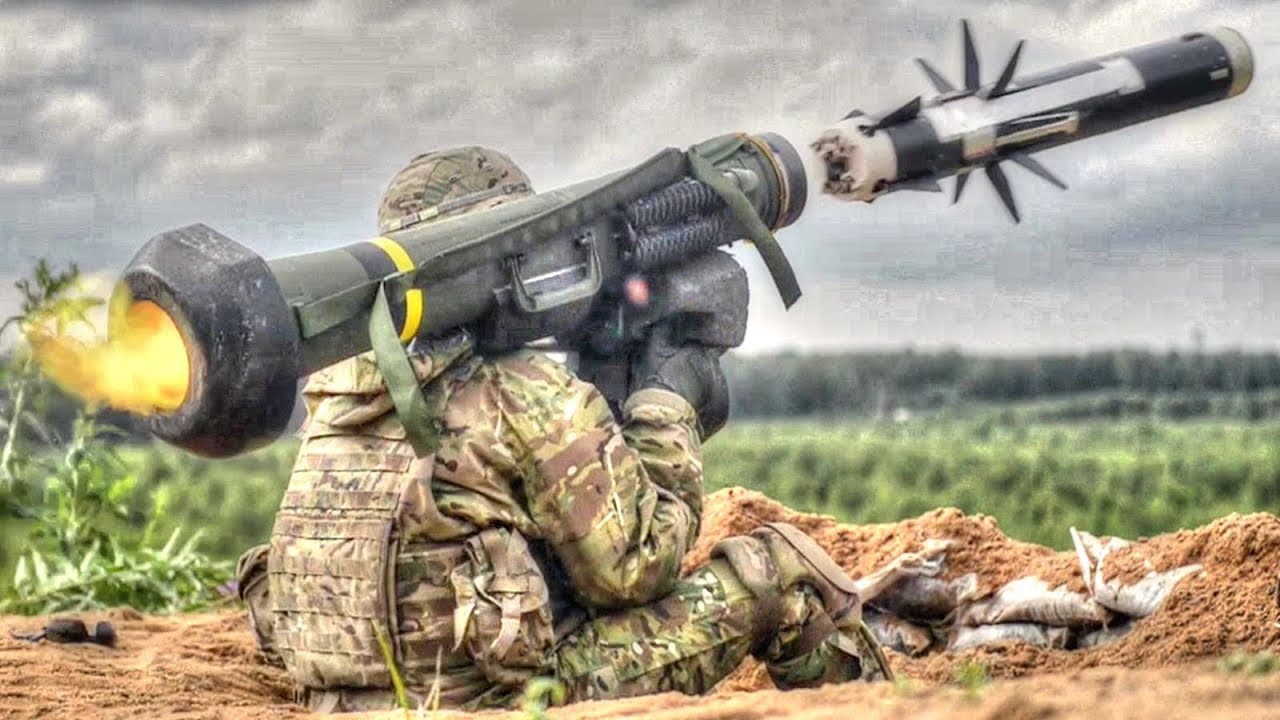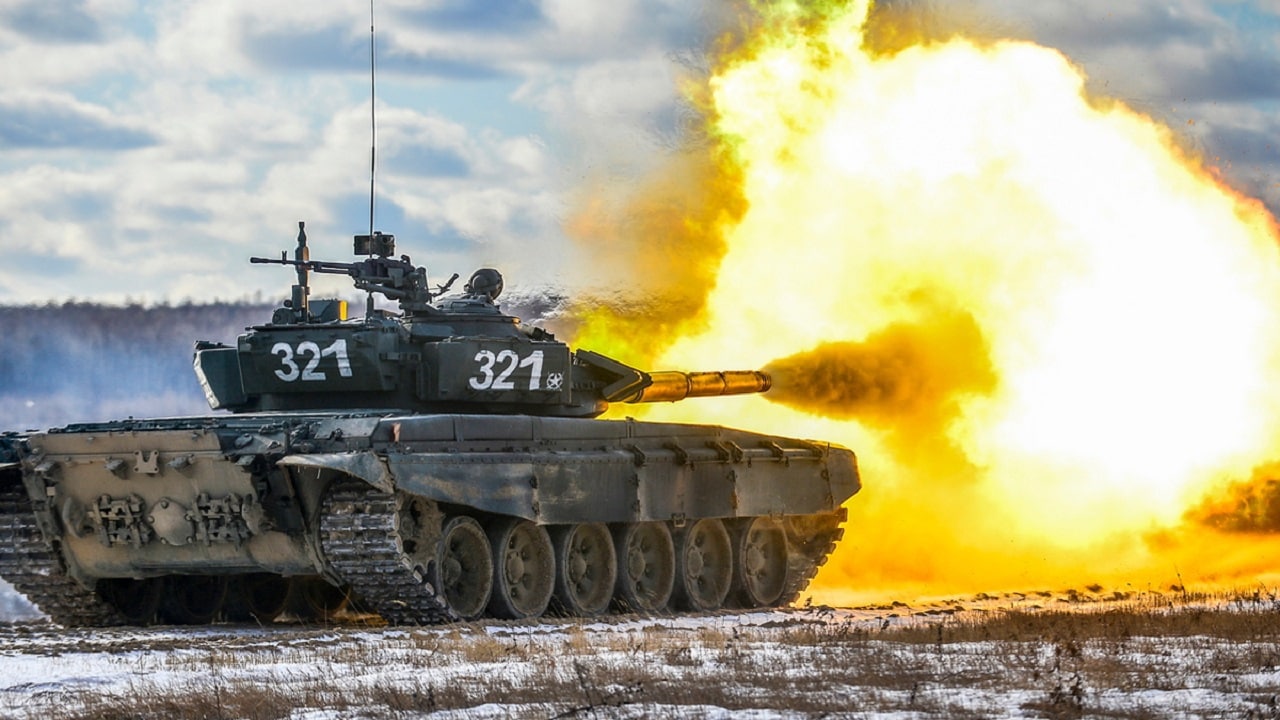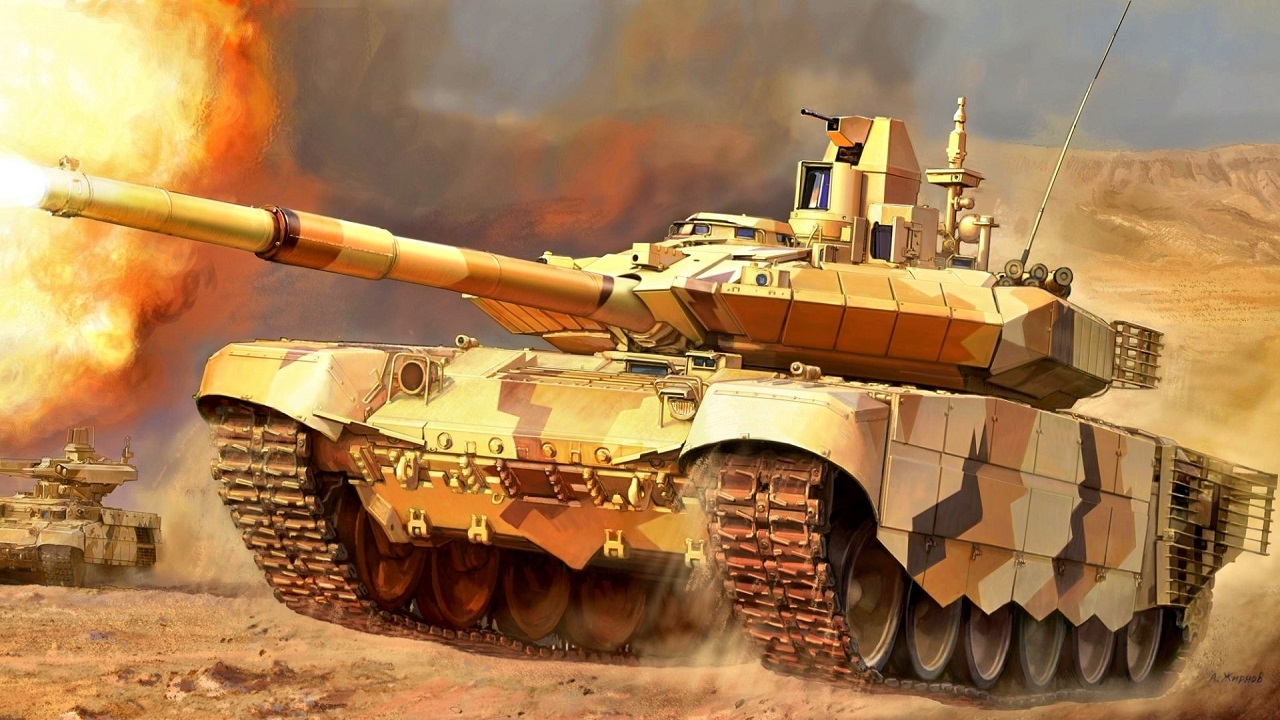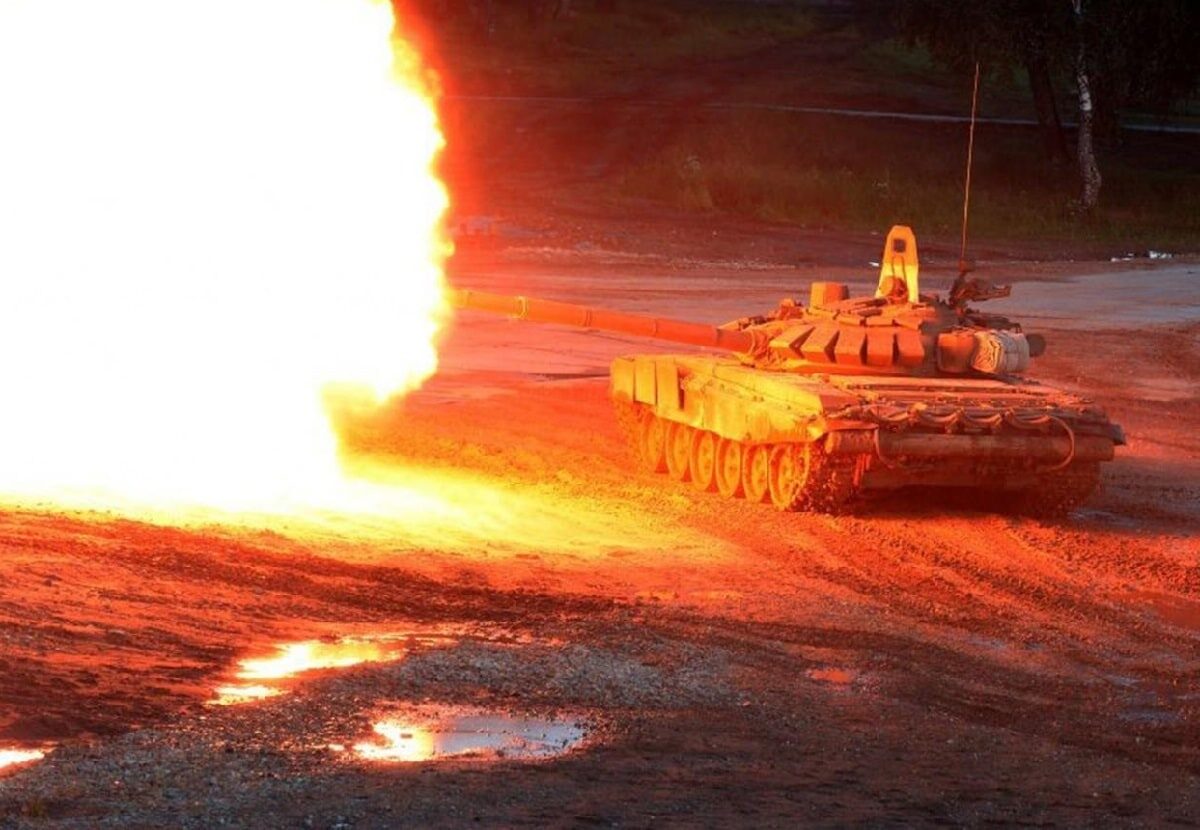Key Points and Summary: The T-90A, once hailed as Russia’s premier main battle tank, has struggled in Ukraine, revealing critical vulnerabilities.
-Despite its Shtora-1 active protection system, the T-90A has proven ineffective against modern Western anti-tank weapons, including Javelins and drones. Its similarities to upgraded T-72s raise questions about its cost-effectiveness.
-Reports of poor maintenance, faulty reactive armor, and unreliable electronics further diminish its battlefield credibility.
-Captured T-90As are now being modified by Ukraine, showing that even their enemy sees flaws in the design. With the T-90M now preferred, the T-90A may soon be a relic of past Russian military ambitions.
Russia’s T-90A vs. Ukraine’s Weapons: A Losing Battle?
The T-90A main battle tank, a modernized version of the Soviet-era T-72, was significant component of Russia’s armored forces. It was designed to replace aging soviet tanks and become the backbone of the Russian tank fleet. However, its performance in the Ukraine conflict has revealed several critical vulnerabilities that challenge its reputation as a formidable weapon.
Design and Capabilities
The T-90A is equipped with a 125-mm smoothbore gun capable of firing high-explosive fragmentation and armor-piercing ammunition.
It also features an automatic loading system, which allows for a rapid-fire rate of up to seven rounds per minute.
The tank’s crew consists of a driver, commander, and gunner, and it can reach speeds of up to 60 kilometers per hour with an operational range exceeding 500 kilometers.
One of its main selling points when first developed was the inclusion of the Shtora-1 active protection system (APS).
The Shtora-1 APS was design to jam incoming ATGMs using infrared dazzlers (the red eyes on the T-90A) to disrupt laser guidance system.
T-90A: What Does It Offer Compared to a T-72?
At the outset, many observers noticed that the T-90As specs heavily resembled a modernized T-72.
The cannon is the same, the engine and transmission are similar regarding horsepower output, and the autoloader is the same.
The only difference between the two is the turret design and some internal electronics.
From its inception, defense officials in Moscow questioned why they should invest in a more expensive tank with little to no difference in performance from an upgraded T-72.
Performance in Ukraine: Tank Failure
The T-90A, like so many tanks, has struggled in the Ukrainian theater. They were most used in the first months of the invasion in 2022, when Russian tank casualties were arguably at their highest.

Javelin missile firing.
One of the primary reasons is the effectiveness of Western anti-tank weapons, such as the Javelin missile, which have been able to penetrate the T-90A’s armor and active protection systems.
Additionally, the use of drones for reconnaissance and attack has further exposed the tank’s vulnerabilities.
The evolving nature of modern warfare, with its emphasis on mobility and advanced technology, has left the T-90A somewhat outdated. While the same argument can be applied to every tank in Ukraine, even some Western ones, it became apparent that the T-90A offered no significant advantage compared with the T-72B3M.
Maintenance and Reliability Issues
Another significant issue has been the maintenance and reliability of the T-90A. Reports have indicated that many of these tanks suffer from degraded electronics and poor maintenance practices.
There have even been instances where the reactive armor, designed to protect against incoming projectiles, was found to be filled with rubber or empty compartments (take such reports with a grain of salt).

Russian T-90 tank firing its main gun. Image Credit: Russian Ministry of Defense.
These shortcomings have severely impacted the tank’s effectiveness on the battlefield. To make matters worse, the Shtora-1 system proved heavily unreliable in modern combat.
The system cannot jam top attack missiles like the Javelin, nor can it do anything against drones. The system simply was not made with future innovations in mind.
Ukrainian Adaptations
Interestingly, the Ukrainian military has managed to capture and modify several T-90As for their use.
These modifications include adding foldable mesh structures at the rear to protect against kamikaze drones and replacing standard side screens with Kontakt-1 explosive reactive armor.
These adaptations highlight the Ukrainian forces’ resourcefulness and ability to turn captured equipment to their advantage.
Does the T-90A Have a Future?
The T-90A is a dead end. Its performance in Ukraine has exposed significant vulnerabilities.
The tank’s design, suited for a different era of warfare, has not held up well against modern anti-tank weapons and tactics.
Additionally, issues with maintenance and reliability have further diminished its battlefield effectiveness.

Russian T-90 Tank. Image Credit: Creative Commons.
From Russia’s perspective, the best course of action would be to transform any remaining T-90As to the flawed, more reliable T-90M standard.
About the Author: Isaac Seitz
Isaac Seitz, a 19FortyFive Defense Columnist, graduated from Patrick Henry College’s Strategic Intelligence and National Security program. He has also studied Russian at Middlebury Language Schools and has worked as an intelligence Analyst in the private sector.

